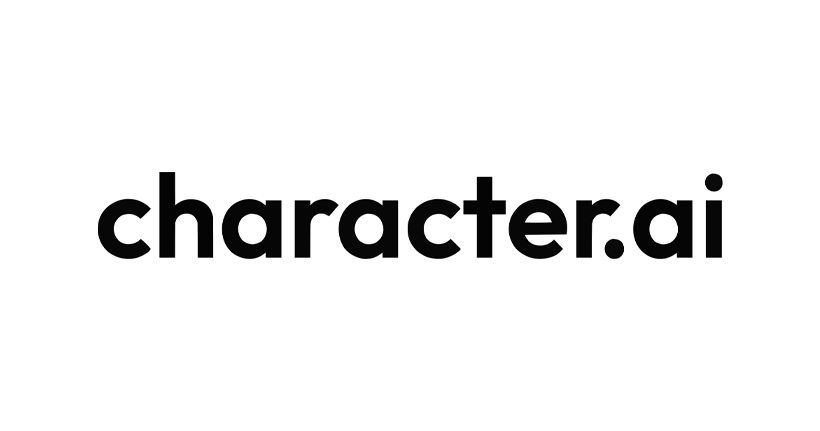Exploring Character.AI: Revolutionizing Human-AI Interaction
In this in-depth article, we explore the rise of Character.AI, its core technologies, user appeal, ethical considerations, and how brands are leveraging this tool to enhance customer experience.
5/7/20253 min read


Introduction
Artificial Intelligence (AI) has rapidly advanced beyond automation and analytics, finding its way into everyday human interactions. One standout innovation in this space is Character.AI, a platform that allows users to create and interact with AI-driven personas in a conversational format. As the name increasingly trends on Google searches worldwide, curiosity about the tool and its implications grows. But what exactly is Character.AI, and why is it capturing the imagination of millions?
What Is Character.AI?
Character.AI is a web-based platform developed by former Google engineers Noam Shazeer and Daniel De Freitas. It allows users to engage in natural conversations with AI-generated characters ranging from fictional heroes and historical figures to custom-built personalities. These characters simulate human-like responses using large language models (LLMs), resulting in rich, continuous, and entertaining dialogue.
Unlike basic chatbots, Character.AI's models are built to retain memory, tone, and personality traits throughout interactions. This dynamic makes it more than a tool—it's an experiential platform where users return regularly to interact with familiar digital personas.
Why Character.AI Is Trending
There are several reasons Character.AI has become a top-searched AI keyword on Google:
Personalization: Users can design and refine their own AI characters, tailoring personality, tone, and knowledge.
Entertainment Value: Interactions range from fun and humorous to deeply philosophical.
Social Substitution: Many users treat their characters like companions, advisors, or role-play partners.
Free and Accessible: The base version is available without a subscription, making it highly accessible.
The platform's ability to emulate intimacy and personalization explains its rising popularity, especially among younger users and online communities.
Technological Foundation
At its core, Character.AI relies on transformer-based language models similar to GPT. However, the company has developed proprietary models with strong contextual memory and dialogue coherence. These models are hosted on high-performance servers capable of handling millions of concurrent conversations.
Advanced moderation tools and algorithmic filters are also integrated to detect harmful content, although the system still faces criticism for occasional lapses.
Use Cases and Applications
Character.AI is not just for entertainment. Brands and businesses are exploring innovative ways to integrate it into customer service and marketing:
Customer Support Bots: Brands can deploy AI personas that speak in a consistent tone aligned with the company voice.
Virtual Influencers: AI characters can act as digital brand ambassadors, interacting with users across multiple channels.
Education and Training: Some institutions use Character.AI to simulate historical figures or role-play scenarios for students.
Mental Health and Companionship: Although not a replacement for therapy, Character.AI can offer basic conversational support for people feeling isolated.
Ethical Considerations
With the rise of realistic AI personas, several ethical issues emerge:
Emotional Dependence: Users may form attachments to AI that lack human reciprocity.
Misinformation: AI characters can sometimes generate false or misleading content.
Data Privacy: Conversations with AI are stored and analyzed, raising concerns about data usage and security.
The company has taken steps to enforce transparency and user guidelines, but as the platform grows, oversight will need to keep pace.
Character.AI vs. Competitors
Compared to other AI chatbot platforms (like Replika, ChatGPT, or Meta’s AI), Character.AI’s edge lies in:
Narrative Depth: Persistent personalities allow for storytelling and continuity.
Character Library: A large, user-generated catalog of public characters.
Customization: Users have granular control over how a character behaves.
While Replika focuses more on emotional support and ChatGPT on general-purpose utility, Character.AI blends creativity, entertainment, and intelligence in a unique way.
Brand Engagement and Market Position
Several forward-thinking brands have already tested or expressed interest in Character.AI’s integration capabilities:
Fashion and Lifestyle Brands: Using AI personas as stylists or virtual influencers.
Gaming Companies: Creating AI-driven NPCs (non-player characters) for richer game environments.
E-commerce Sites: Deploying personalized shopping assistants to guide users.
As consumer expectations shift toward more interactive and conversational interfaces, platforms like Character.AI are well-positioned to capitalize.
The Future of Human-AI Dialogue
The success of Character.AI marks a pivotal moment in how we perceive and engage with artificial intelligence. These aren’t just tools—they’re companions, assistants, and collaborative partners. As models become more emotionally aware and linguistically sophisticated, the line between human and machine interaction will continue to blur.
With responsible development and ethical safeguards, Character.AI could represent the future of personal computing, education, and digital companionship.
Conclusion
Character.AI is more than a tech trend—it’s a social and technological shift. Its ability to captivate users with meaningful, personality-driven dialogue makes it one of the most intriguing developments in AI today. As the platform evolves and expands into business and education, it offers both opportunities and challenges. For users, creators, and brands alike, Character.AI is a space worth watching—and engaging with.
© 2025. All rights reserved.